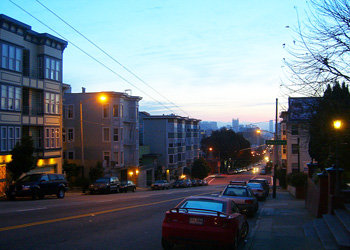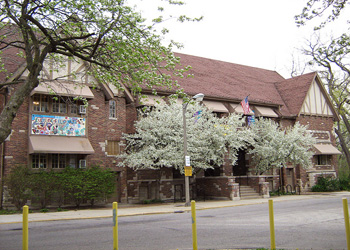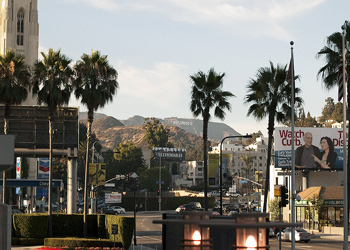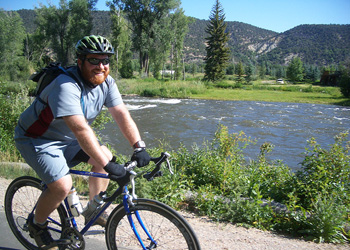Real estate's Champagne wishes and caviar dreams are waking to a stingy, jobless reality of metropolitan moochers posing as the wealthy.
The U.S. is at 9.2% unemployment and conspicuous housing consumption is constricted by tightening loan requirements, while the average home has fallen 4.6% in price from a year ago, according to the National Association of Realtors. In neighborhoods where housing prices have remained high, properties are increasingly out of reach.
"Even with recent economic softness, this is a disappointing performance with home sales being held back by overly restrictive loan underwriting standards," says Lawrence Yun, chief economist for the National Association of Realtors. "There's been a pendulum swing from very loose standards, which led to the housing boom, to unnecessarily restrictive practices as an overreaction to the housing correction."
But why break your back paying close to seven figures for a closet in one of the most expensive neighborhoods in the U.S. when there's cheaper property nearby? The zip code's cache is nice and all, but even television and Hollywood helped America realize that Alan Arkin's family in Slums of Beverly Hills could get by on the fringes and that Gabrielle Carteris' Andrea Zuckerman character didn't have to be born or have parents in Beverly Hills: 90210 to get into fictional West Beverly High School.
TheStreet took a look at five of the tonier neighborhoods in America and found five more on the outskirts that gave residents deep discounts while dropping them directly adjacent to all the stores, restaurants, theaters, museums, parks and other amenities that command premium prices from the rich neighbors:
Wealthy: New York's Upper West Side
Cheaper: Inwood
Cheaper: Inwood
 |
Want to grab a morning bagel with Harvey Keitel at Barney Greengrass, catch the Akira Kurosawa retrospective at Symphony Space, grab some cheese and a baguette at Zabar's and head over to Central Park for the summer concert series? There are two vastly different ways for homebuyers to approach this.
The first is to actually live on the Upper West Side and pay the median $933,400 that Zillow says neighborhood residents are shelling out for their homes. The other is to look just a few clicks up the Hudson in Inwood, which offers Riverside Drive-quality views of the Hudson and the palisades, tree-lined streets and well-kept homes on the neighborhood's west side and stops along the A and 1 subway lines that take residents to any Upper West Side stop within minutes.
While Inwood residents aren't exactly a skip away from the Columbus Avenue Shake Shack or the fossil room at the American Museum of Natural History, they're paying an average of only $356,000 to be pretty darn close without having to cross a river or live in another city. Inwood may as well be called "Where?" during dinner-party discussions, but its proximity to the best of the West Side and the small-town look of some of its blocks despite being situated squarely in Manhattan make it a place worth knowing.
Wealthy: San Francisco's Presidio Heights
Cheaper: Western Addition
Cheaper: Western Addition
 |
So you've heard all about San Francisco and would love a place near a lot of parkland with a really great view of the water and Golden Gate Bridge? OK, that'll be $2.8 million, please.
Presidio Heights and "cheap" almost never appear in the same sentence. With a plot adjacent to the sprawling Presidio of San Francisco National Park and the former military installation's fields, historic architecture and views, Presidio Heights is easily the most expensive neighborhood in the city.
The adjacent Marina and Pacific Heights neighborhoods are similarly sought after and sport $1.16 million and $1.05 million median home prices, respectively. There is, however, a neighborhood south of California Street and east of Presidio Avenue that lets its residents live close by for roughly 20% of the cost.
Western Addition is home to two of the city's hospitals, the city's University of California campus, Japantown, the Fillmore district and a number of parks, but is just five blocks away from the Presidio at its closest point and even closer to Presidio and Laurel heights' shops, restaurants, specialty grocers and coffee bars along Sacramento and California streets.
That's if homeowners want them. Western Addition's jazz clubs, farmers markets, Fillmore Auditorium and restaurants like Yoshi's do just fine for themselves without bankrupting the surrounding gentry. This all still needs a bit of perspective, as Western Addition's $576,700 median price tag on homes is on the lower end of San Francisco's offerings, but would easily make it the most expensive neighborhood in Chicago.
Wealthy: Chicago's North Center/Lake View
Cheaper: Albany Park
Cheaper: Albany Park
 |
When you live in either of these Chicago neighborhoods, gentrification isn't something that's happening, but what the guy who owned your condo two owners ago heard he was responsible for just before shrugging it off and heading out for post-game beers at the L&L Tavern.
Lake View and its Wrigleyville and Boystown neighborhoods are among some of the most sought-after in the city, especially for those who like the idea of living in a doorman building on North Lakeshore, catching the Brown, Red or Purple lines to work, making a dinner comprising items purchased at Whole Foods and then heading out for a show at Metro, a game at Wrigley or a few drinks on Lakeview or North Clark. They're paying a median of $300,000 to do so, which is considerable in a town where the high-end median is $446,000 for properties on West DePaul.
The same can be said for nearby North Center, which hikes up the premium to $346,000 while adding bars, restaurants, bowling alleys and movie theaters while subtracting the lake and the Wrigley Field-adjacent nightlife. Is there any way to take part without paying some of the highest buy-in prices in the city?
The answer's found a few paces west in Albany Park, where a neighborhood dotted with green space like Ravenswood Manor Park and Ronan Park right on the river also has three brown-line stations just a few stops away from both North Center, Lake View and even Wrigleyville, where the Southport stop provides Albany Park residents a more favorable ride home than what their more monied neighbors are taking when they jam the red line's Addison station after the ninth inning.
Albany Park does just fine on its own, too, as Koreatown's restaurants, the mix of hookah and dart bars at West Lawrence Avenue and North Pulaski Road and the proliferation of bicycle, gadget, tobacco and other shops scattered throughout the neighborhood give the place the type of character that doesn't come one mixed-use residential development at a time. For all this, homebuyers pay about $189,000 on average, which is less than more remote but well-tread gems like the artistically inclined Pilsen neighborhood ($199,000) and little more than still-developing neighborhoods like Humbolt Park ($174,100).
Wealthy: Beverly Hills, Calif.
Cheaper: Hollywood
Cheaper: Hollywood
 |
There was a time when they would let any hillbilly with poor marksmanship, a pickup truck piled high with personal belongings and a little oil money into Beverly Hills with a smile. Now anything less than the $1.9 million median home price wouldn't even secure you a parking spot.
Perhaps there's the stray "dingbat" apartment here or there, but the overwhelming majority of Beverly Hills and the area surrounding have prices that have been star-quality for a good, long time. Beverly Hills is ringed by the Hollywood Hills ($971,200 median home price), Bel Air ($1.74 million), Westwood ($655,700), Century City ($642,600), West Los Angeles ($760,300), Pico-Robertson ($667,600) and Mid-City West ($800,500) neighborhoods, which are all well above the city's $375,900 median.
The only neighborhood directly adjacent to Beverly Hills that even remotely meets that city's median is Hollywood, where a $417,200 price tag has led to increasing gentrification in West Hollywood and throughout the rest of the neighborhood in general. High-end restaurants, coffee shops and bars are open, celebrities and paparazzi are back and home prices were on the rise until the recent dip in the housing market. The lingering memories of drug dealers and 24-hour pizza places may buy a homebuyer some time in snatching up some rich-folk-adjacent property here, but considering it's the one piece of the Beverly Hills ring that isn't ridiculously high-priced as of yet, Hollywood's rebound shouldn't be bogged down much longer.
Wealthy: Aspen, Colo.
Cheaper: Basalt
Cheaper: Basalt
 |
It's a little early to be thinking about ski season, but not if your options are plunking down a median $1.99 million for a place or spending a quarter of that to take a one- to two-hour drive at the height of winter.
Aspen and neighboring Snowmass really want skiers to commit when considering property in either area. That $1.99 million isn't great, but it's a deep discount in Aspen after the housing crisis and recession knocked the frosty wind out of home sales and continued to send prices downhill well afterward. The median cost of a home in Aspen was 25% more at this time last year.
It's a similar story in Snowmass, where the $1.25 million median is almost 22% less than it was in summer 2010. Homebuyers can bet against a comeback and wait for prices to plummet to the six-figure mark, but that kind of self-destructive cynicism isn't necessary when there's already a more budget-friendly option down the road.
Basalt, Colo., isn't exactly bargain basement with its $575,000 median home price, but has more to offer than Aspen and Snowmass. Basalt's roughly 27 minutes from the slopes at Aspen and six minutes from Snowmass, but its position on the Frying Pan River and Ruedi Reservior make it a great trout-fishing and boating spot as well. If so inclined, a homeowner can take some of that savings, invest in a decent mountain bike and spend the summer pedaling through Roaring Fork Valley. It's in the middle of the action without being amid the throngs of tourists, which in itself justifies the commute.
No comments:
Post a Comment